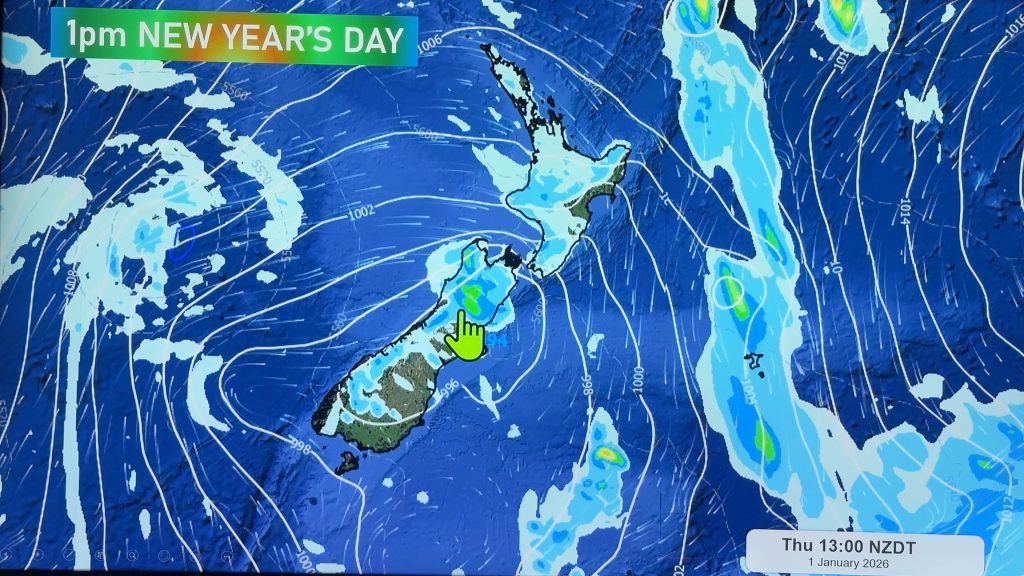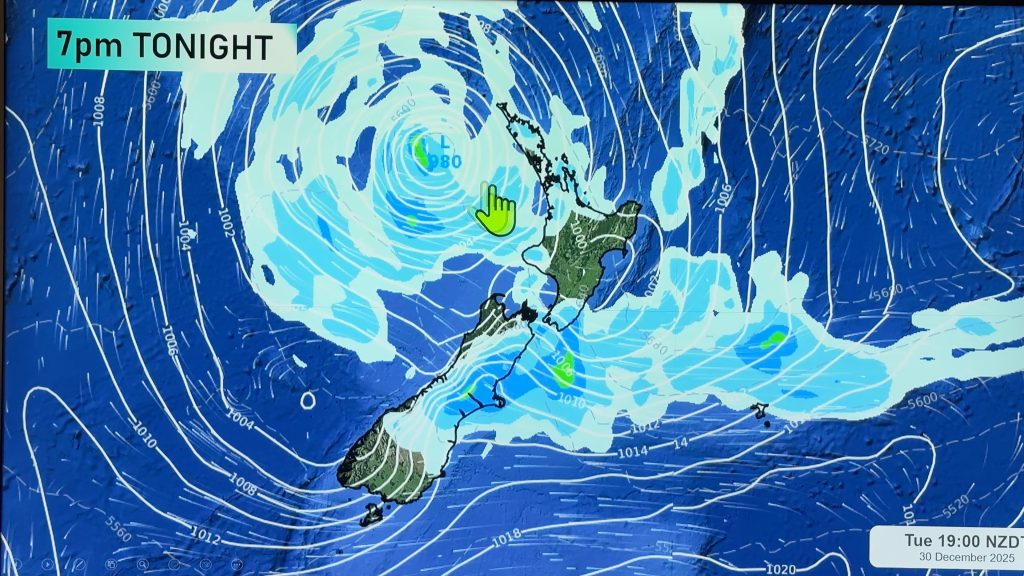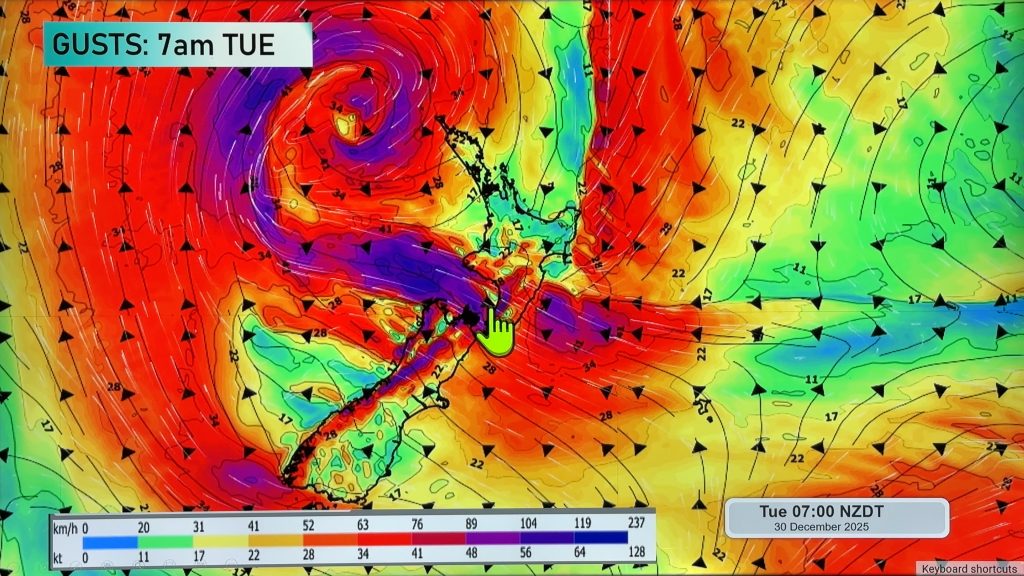
STORM SURGES OF UP TO 35 CM ABOVE ASTRONOMICAL TIDE COINCIDED WITH HIGH WINDS IN NELSON ON 1 FEBRUARY 2018.
“Strong winds are common along the west coast of the South Island, but systems like Fehi that have tropical origin cause a much bigger pressure drop than normal winter storms. Such pressure drops cause sea level to rise, a phenomenon known as the inverse barometer effect.
“Storm surges of up to 50 cm are not unusual in New Zealand, and thankfully they most often do not coincide with king tides. However, occasionally the worst possible combination of events will occur, and at such time good forecasting become very important.â€
Storm surge forecasts can predict dangerously high water levels up to seven days in advance, providing valuable alerts for for low-lying coastal locations. MetOcean Solutions frequently collaborates with emergency services and local authorities to provide forewarning when large storm surges are predicted.
“Storm surges can be reliably predicted,†continues Rafael. “MetOcean Solutions forecasts storm surges nationwide using a complex high definition 3D hydrodynamical model with 5 km resolution.The model computes the atmospheric effects on coastal water levels. It combines this with baseline water levels generated by open ocean eddies and water column expansions and contractions caused by the spatially variable vertical density distribution.
“Waves also significantly modify water levels and consequent impacts of storm surges. We are currently working on improving our models to include waves in storm surge predictions for vulnerable locations around New Zealand. Hopefully such models will contribute towards keeping coastal communities safe when the next perfect storm hits.â€

THE 35 CM STORM SURGE COINCIDED WITH KING TIDES AND WINDS PUSHING WATER ASHORE, RESULTING IN WIDESPREAD FLOODING IN NELSON.






Add new comment